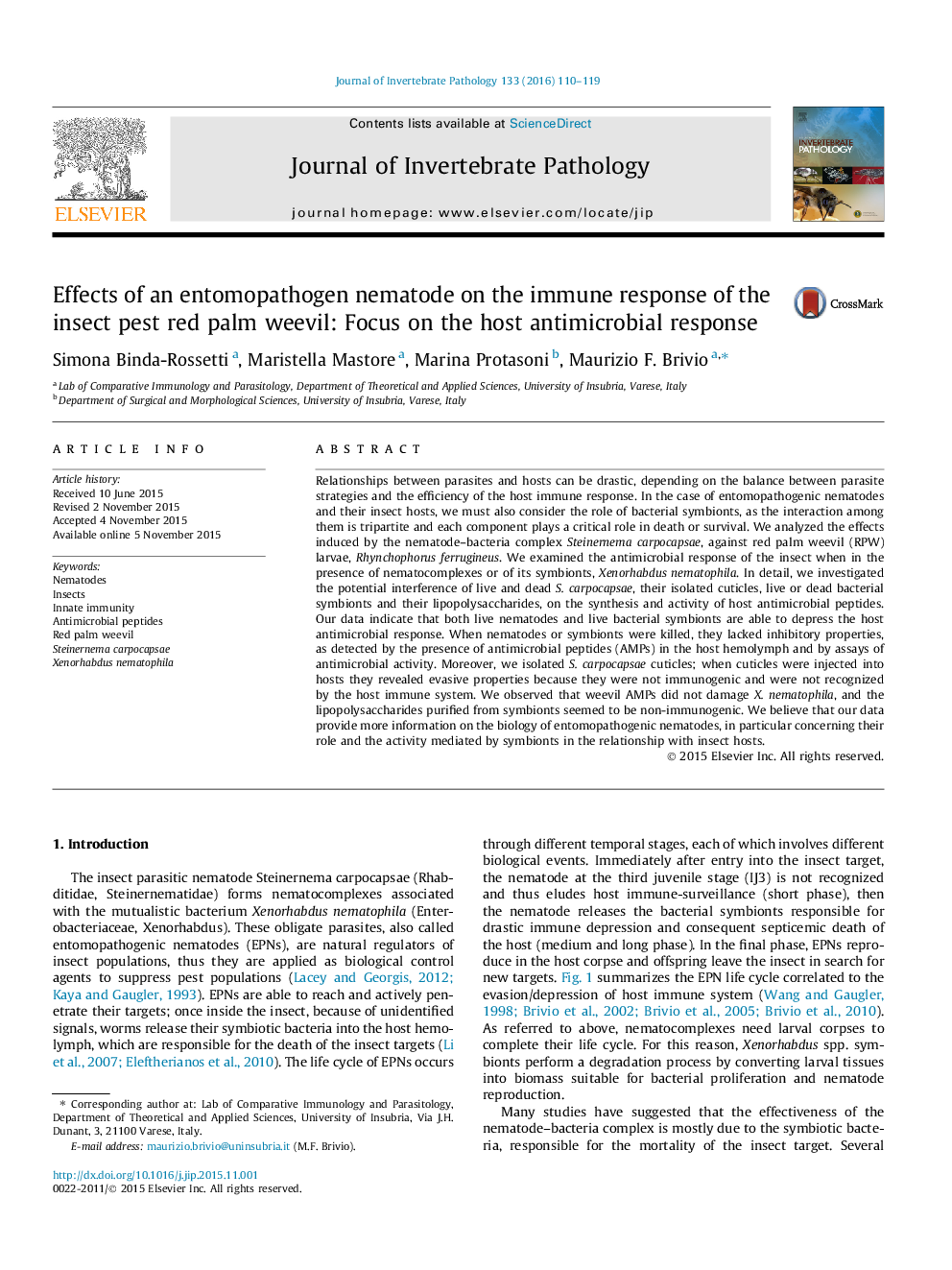| کد مقاله | کد نشریه | سال انتشار | مقاله انگلیسی | نسخه تمام متن |
|---|---|---|---|---|
| 4557614 | 1628219 | 2016 | 10 صفحه PDF | دانلود رایگان |
• Interaction between S. carpocapsae and R. ferrugineus.
• Immune evasive/depressive role of nematode–bacteria complexes.
• Effects of parasites complexes on host antimicrobial response.
• Effects of isolated bacteria symbionts on host antimicrobial response.
Relationships between parasites and hosts can be drastic, depending on the balance between parasite strategies and the efficiency of the host immune response. In the case of entomopathogenic nematodes and their insect hosts, we must also consider the role of bacterial symbionts, as the interaction among them is tripartite and each component plays a critical role in death or survival. We analyzed the effects induced by the nematode–bacteria complex Steinernema carpocapsae, against red palm weevil (RPW) larvae, Rhynchophorus ferrugineus. We examined the antimicrobial response of the insect when in the presence of nematocomplexes or of its symbionts, Xenorhabdus nematophila. In detail, we investigated the potential interference of live and dead S. carpocapsae, their isolated cuticles, live or dead bacterial symbionts and their lipopolysaccharides, on the synthesis and activity of host antimicrobial peptides. Our data indicate that both live nematodes and live bacterial symbionts are able to depress the host antimicrobial response. When nematodes or symbionts were killed, they lacked inhibitory properties, as detected by the presence of antimicrobial peptides (AMPs) in the host hemolymph and by assays of antimicrobial activity. Moreover, we isolated S. carpocapsae cuticles; when cuticles were injected into hosts they revealed evasive properties because they were not immunogenic and were not recognized by the host immune system. We observed that weevil AMPs did not damage X. nematophila, and the lipopolysaccharides purified from symbionts seemed to be non-immunogenic. We believe that our data provide more information on the biology of entomopathogenic nematodes, in particular concerning their role and the activity mediated by symbionts in the relationship with insect hosts.
Figure optionsDownload as PowerPoint slide
Journal: Journal of Invertebrate Pathology - Volume 133, January 2016, Pages 110–119
